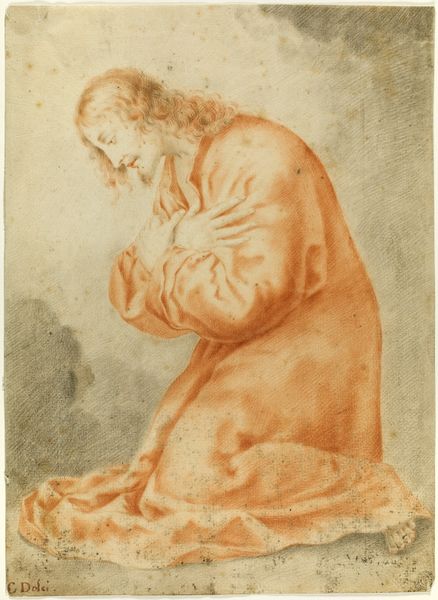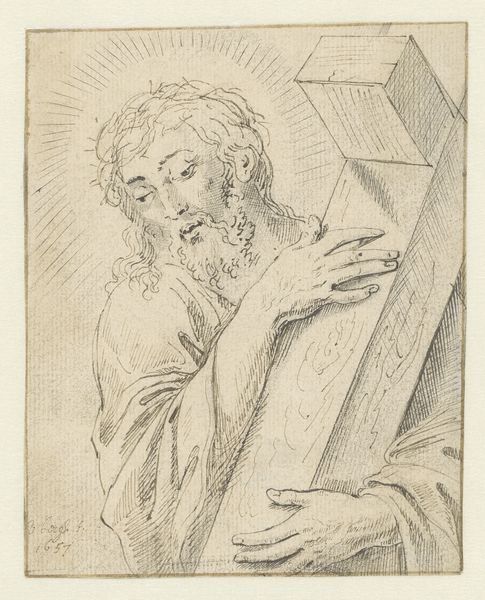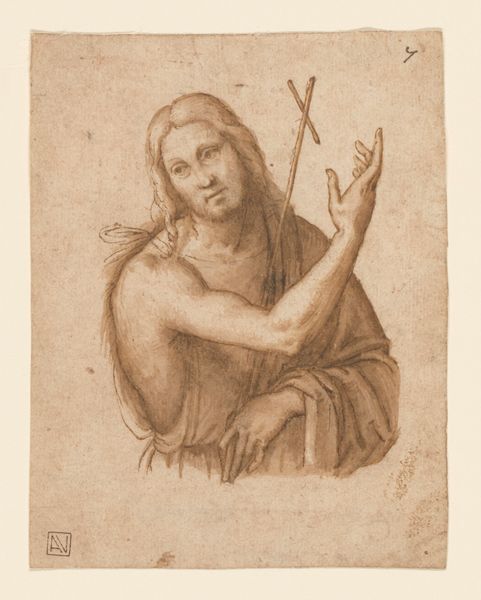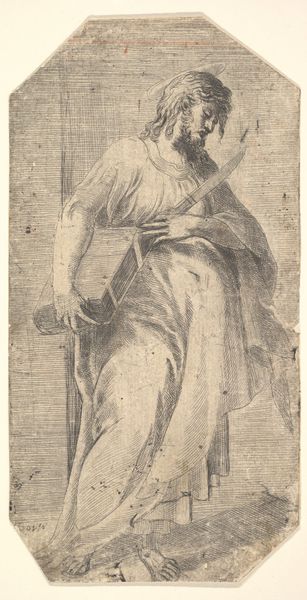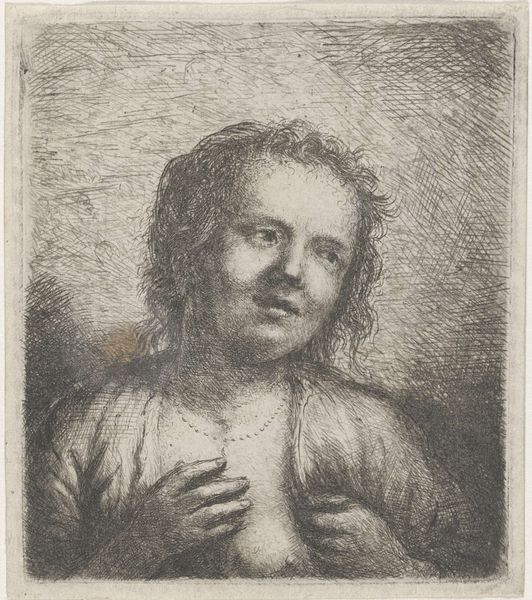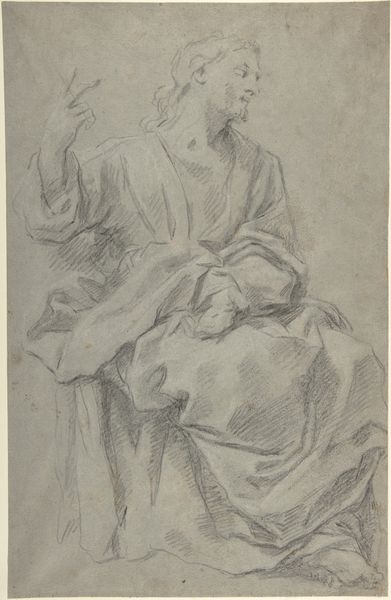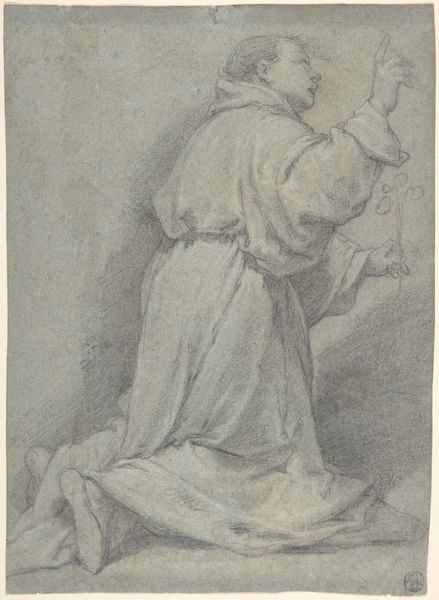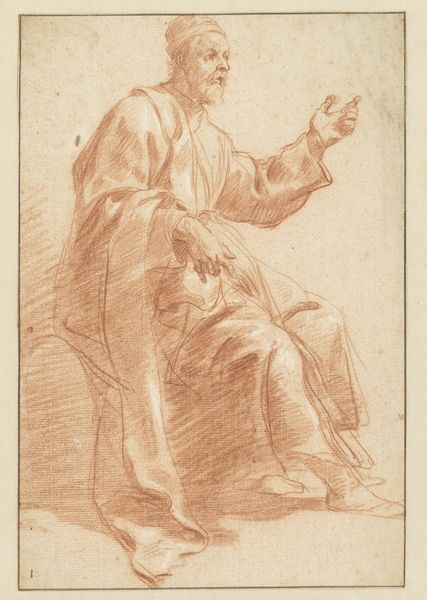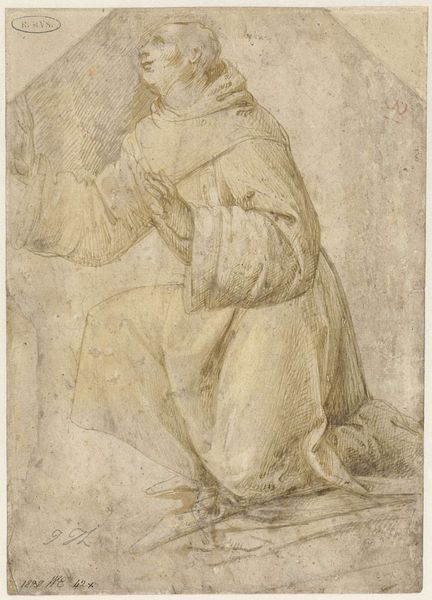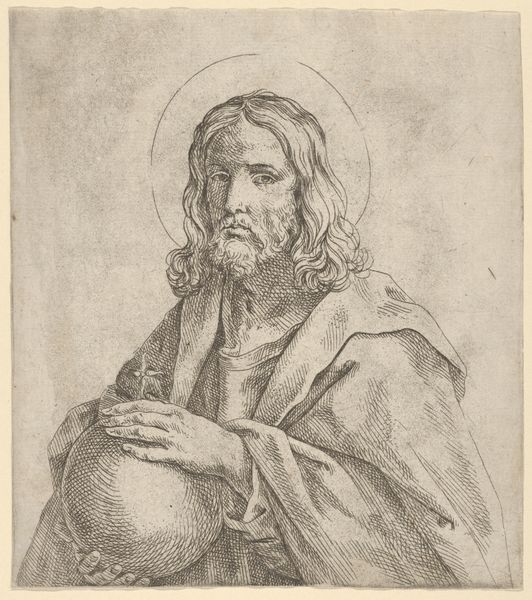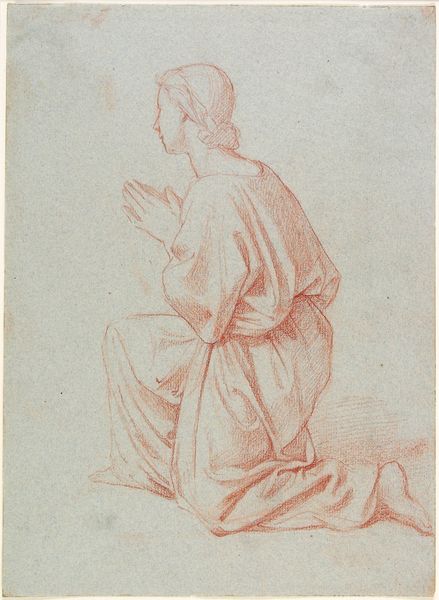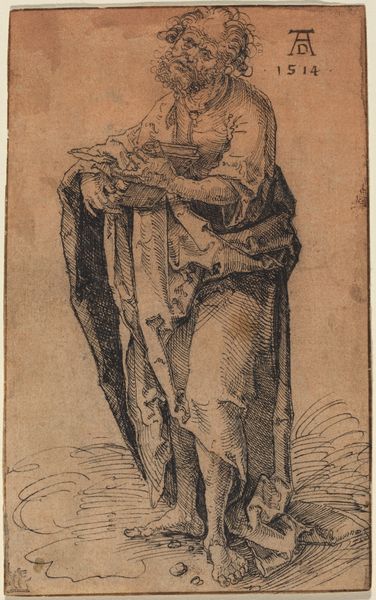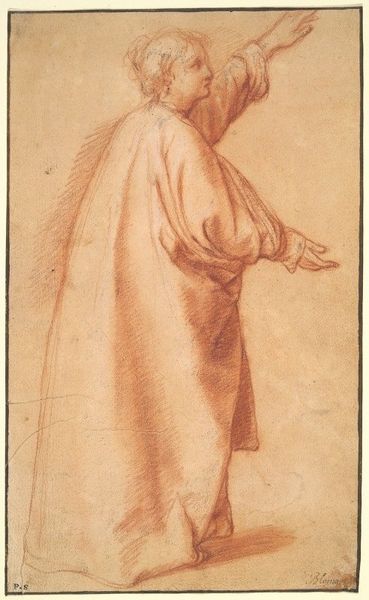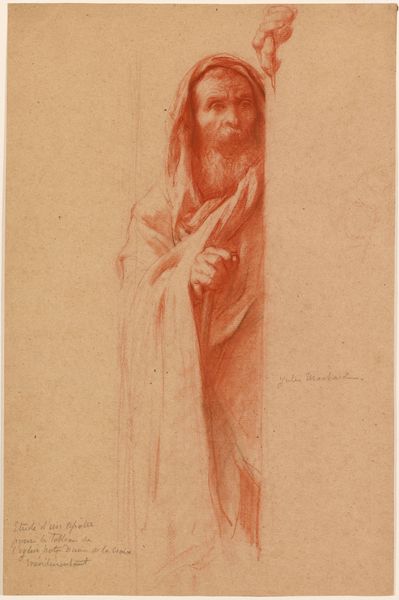
drawing, paper, ink
#
portrait
#
drawing
#
baroque
#
figuration
#
paper
#
ink
#
history-painting
Dimensions: height 201 mm, width 161 mm
Copyright: Rijks Museum: Open Domain
This is Guercino’s ‘Christus’, made with pen and brown ink in the 17th century. The immediacy of the drawing gives it an arresting presence, despite its modest size. Guercino was a prolific draughtsman, and would have used drawings like these to explore compositions and poses for his paintings. Notice the freely drawn lines, applied with rapid strokes. In particular, the use of hatching, or closely spaced parallel lines, to build up shadow and volume. Although seemingly effortless, the ink medium allows very little room for mistakes. The sepia ink would have been made from iron filings, tannin and gum arabic, creating a fluid that bites into the paper and allows for sharp, well-defined marks. The way Guercino handles the pen, rapidly building up the figure from lines, reminds us of the skill and knowledge of the artist's hand. The artist leaves space for the viewer to complete the image, making a connection between the artist’s labor and the viewer’s own act of interpretation. This drawing exemplifies how a humble material, combined with expert craftsmanship, can convey complex emotions and ideas.
Comments
No comments
Be the first to comment and join the conversation on the ultimate creative platform.
